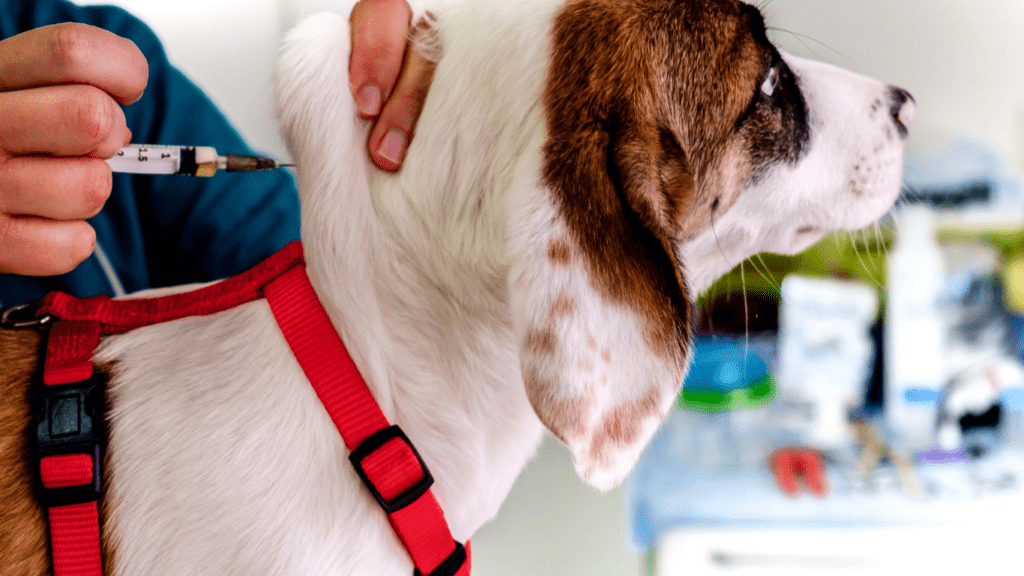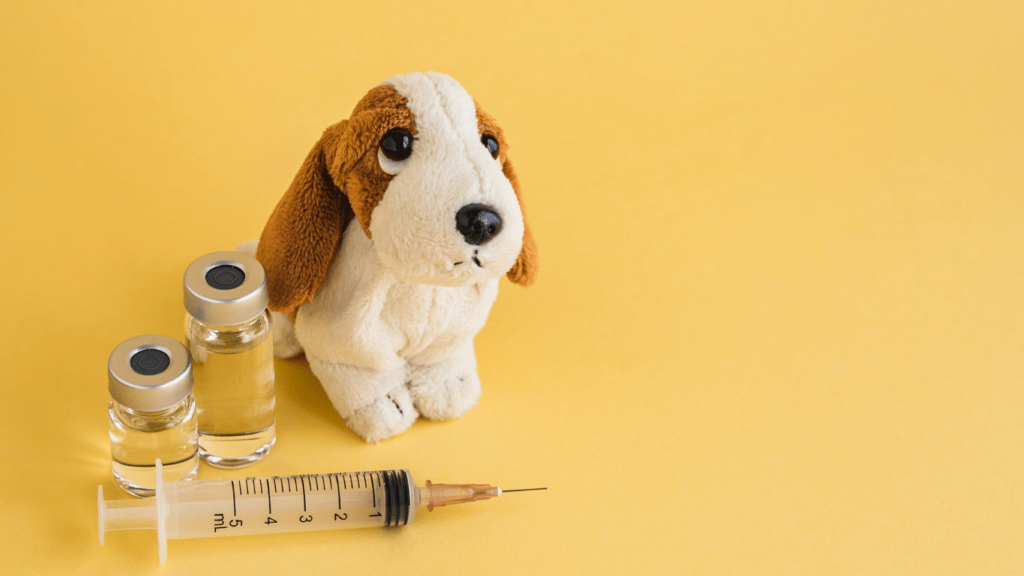Importance of Pet Vaccinations
Vaccinations protect pets from contagious diseases. They stimulate the immune system to fight infections, reducing illness. Without vaccinations, pets can contract diseases like:
- rabies
- parvovirus
- distemper
which can lead to severe health issues or death. Routine vaccinations save money in the long run by preventing expensive treatments for serious diseases. Veterinary experts agree that vaccinating pets contributes to public health. By reducing disease spread, we also protect humans and other animals.
Vaccines ensure herd immunity, which shields unvaccinated animals. Some pets, due to age or health conditions, cannot receive vaccines. They rely on herd immunity for protection. High vaccination rates among the pet population are crucial.
Pets’ health directly impacts their quality of life. Vaccines help in maintaining optimal health, keeping them active, and prolonging their lives. I’ve seen firsthand how regular vaccinations can make a dramatic difference.
Updates in pet vaccinations focus on improving efficacy and reducing side effects. New vaccine formulations provide better protection while minimizing risks. It’s crucial to stay informed about these updates for the well-being of pets.
Recent Changes in Pet Vaccination Protocols
Veterinary medicine constantly evolves new methods to improve pet health. Recent changes in vaccination protocols aim to enhance protection and reduce risks.
New Vaccination Schedules
Vaccination schedules now tailor to a pet’s age, health status, and lifestyle. For example, puppies and kittens often receive vaccinations at 8, 12, and 16 weeks, followed by boosters at regular intervals. Adult pets may need fewer boosters, adjusted based on risk factors and exposure levels.
Updated Vaccine Formulations
Vaccine formulations now use advanced technologies to increase efficacy and reduce side effects. Recombinant vaccines, which use a small part of the pathogen’s DNA, offer strong immunity with minimized adverse reactions. For instance, new feline leukemia vaccines incorporate recombinant technology for safer, long-lasting protection.
Breed-Specific Recommendations
Breed-specific vaccination guidelines address unique genetic predispositions. For example, toy breeds like Chihuahuas may have different dosage requirements compared to larger breeds like Great Danes. Veterinary experts recommend tailoring vaccination plans to each breed’s specific needs, ensuring optimal safety and effectiveness.
Advances in Vaccine Technology
Recent advancements in vaccine technology have revolutionized pet healthcare. Cutting-edge solutions like mRNA and intranasal vaccines offer improved protection and convenience.
mRNA Vaccines
mRNA vaccines use synthetic messenger RNA to instruct cells to produce proteins that trigger an immune response. Unlike traditional vaccines, mRNA vaccines don’t require a live virus. This reduces the risk of infection and speeds up the development process. For pets, mRNA vaccines offer targeted protection, reducing the likelihood of adverse reactions. Veterinarians can quickly adapt these vaccines to combat new strains and emerging diseases.
Intranasal Vaccines
Intranasal vaccines deliver doses through the nasal passages, directly stimulating mucosal immunity. This method is less invasive compared to injections, making it ideal for pets who fear needles. Intranasal administration is particularly effective for respiratory diseases like Bordetella bronchiseptica, which causes kennel cough. It provides rapid local immunity, offering quicker protection compared to traditional methods.
Addressing Vaccine Hesitancy in Pet Owners

Pet owners often have concerns about vaccinating their pets because of misinformation or fear of side effects. Addressing these hesitancies is crucial for maintaining pet health and public safety.
Common Concerns
- Pet owners frequently worry about potential side effects, vaccine efficacy, and cost. Side effects like lethargy, mild fever, or swelling at the injection site can deter them.
- To alleviate these concerns, I explain that serious side effects are rare, and most pets handle vaccines without significant issues. Citing studies from veterinary associations helps provide credibility.
- For efficacy, I emphasize how vaccines nearly eliminate the risk of severe diseases such as rabies and distemper.
- Cost is another concern, but I demonstrate how the price of preventative care outweighs the high cost of treating preventable diseases.
- Providing detailed cost comparisons encourages vaccination adherence.
Educating Pet Owners
Educating pet owners on the importance of vaccines revolves around sharing accurate, accessible information. I utilize educational tools like brochures, websites, and social media posts to dispel myths and provide clear facts. Hosting informational sessions at the clinic helps to answer questions in real time. Sharing success stories and case studies can illustrate the benefits of vaccines. Employing visual aids, such as infographics and charts, makes complex information more digestible. I encourage open communication and reassure pet owners that their concerns are valid and addressable. Regular updates about new vaccine protocols further enhance their understanding and confidence.
Case Studies and Real-World Impacts
Recent advancements in pet vaccinations have resulted in significant improvements in pet health and public safety. This section explores success stories and identifies areas for improvement.
Success Stories
In a small town in Oregon, a local veterinary clinic implemented an updated vaccination protocol focusing on intranasal vaccines. This approach not only reduced the incidence of respiratory diseases by 30%, but also increased pet owner compliance by 20%. Another example involves a shelter in Texas. By adopting mRNA vaccines, they managed to cut down the parvovirus cases among puppies by 40% within six months.
At a community outreach event in Florida, veterinarians provided educational sessions about breed-specific vaccinations. This initiative increased vaccination rates by 25% and addressed vaccine hesitancy among pet owners. Another case from New York shows a mobile veterinary service offering tailored vaccine schedules, resulting in a 15% decrease in vaccine-related side effects reported.
Areas for Improvement
Though advancements are notable, some areas need enhancement. Vaccine accessibility remains a concern in rural regions. Despite the success of local vaccination clinics, many pet owners still face challenges in accessing services due to distance and cost.
Another area needing improvement is public awareness. While educational campaigns have helped, misconceptions about vaccine risks linger. Greater efforts in disseminating accurate information could further reduce hesitancy. Additionally, there’s a need for more data on long-term vaccine efficacy. While short-term success rates are promising, longer follow-up studies would offer deeper insights and bolster confidence in new vaccines.



 Founder & Pet Wellness Advocate
As the visionary founder of Pet Paw Shack, Kimberliene Sabinin is passionate about helping pet owners provide the best care possible for their furry companions. With a background in veterinary science and animal nutrition, Kimberliene brings years of experience in promoting pet health, safety, and well-being. Her mission is to empower pet owners with practical knowledge about proper nutrition, behavior training, and overall pet wellness.
Founder & Pet Wellness Advocate
As the visionary founder of Pet Paw Shack, Kimberliene Sabinin is passionate about helping pet owners provide the best care possible for their furry companions. With a background in veterinary science and animal nutrition, Kimberliene brings years of experience in promoting pet health, safety, and well-being. Her mission is to empower pet owners with practical knowledge about proper nutrition, behavior training, and overall pet wellness.
